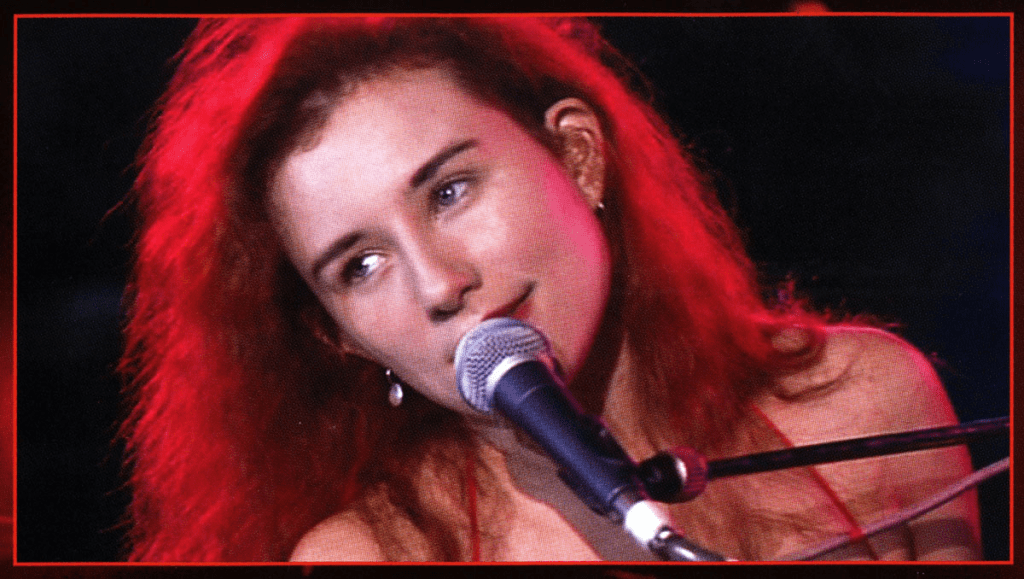Tori Amos is a name that resonates profoundly within the worlds of alternative rock and pop. Known for her powerful vocals, poetic lyrics, and masterful piano skills, Amos has established herself as one of the most influential female musicians of her era. Her journey, filled with personal battles, immense achievements, and lasting impact, has left a significant mark on the music industry. In this article, we explore Tori Amos’s biography, life story, career highlights, and current endeavors, uncovering her evolution as an artist and cultural icon.
Early Years: Discovering a Musical Prodigy

Born Myra Ellen Amos on August 22, 1963, in Newton, North Carolina, Tori Amos displayed musical talent from an incredibly young age. Raised in a family that recognized her potential, she was the daughter of Mary Ellen and Edison Amos. At just two years old, Amos could play music by ear on the piano, an early indication of her innate talent.
By five, she was accepted into the prestigious Peabody Conservatory of Music in Baltimore, Maryland, becoming the youngest student ever admitted. Despite her extraordinary abilities, Amos’s rebellious spirit clashed with the conservatory’s traditional teachings. Her growing interest in rock and pop music eventually led to her expulsion at age 11. Rather than discouraging her, this setback fueled her passion to explore new sounds and songwriting styles.
The Move to Los Angeles and “Y Kant Tori Read”

In her late teens, Amos moved to Los Angeles to pursue a music career. In the late 1980s, she formed a synth-pop band called Y Kant Tori Read, a humorous nod to her inability to sight-read music fluently. The band released its self-titled album in 1988, but it was a commercial flop, failing to gain significant traction.
While the experience was disheartening, it became a turning point for Amos. She decided to focus on a more personal and introspective approach to her music, a decision that would shape her future work and define her as an artist.
Breakthrough with “Little Earthquakes”

Amos’s big break came in 1992 with the release of Little Earthquakes, a deeply personal and emotional album that tackled themes of religion, sexuality, and trauma. Tracks like “Silent All These Years,” “Crucify,” and “Me and a Gun” captured listeners’ attention, showcasing Amos’s confessional songwriting style and raw, haunting vocals.
Little Earthquakes received both critical acclaim and commercial success, reaching high positions on international charts. It established Amos as a fearless artist unafraid to confront uncomfortable topics head-on. This album not only catapulted her into the mainstream but also set the tone for her future music, which would continue to blend intense emotion, piano-driven melodies, and poetic lyrics.
Continued Success: From “Under the Pink” to “Boys for Pele”
Following the success of Little Earthquakes, Amos released Under the Pink in 1994, which included hits like “Cornflake Girl” and “God.” The album further explored themes of female empowerment and spirituality, reaching No. 1 on the UK Albums Chart and solidifying her status as a powerful voice in music.
In 1996, Amos released Boys for Pele, an album named after the Hawaiian volcano goddess. It marked a bold departure from her previous work, featuring harpsichord, gospel choirs, and symbolically rich lyrics. With tracks like “Caught a Lite Sneeze” and “Talula,” Amos demonstrated her growing confidence as both a songwriter and producer.
Experimentation and Evolution in the Late 1990s
Amos continued to push musical boundaries with From the Choirgirl Hotel (1998) and To Venus and Back (1999). The former album marked her venture into electronic sounds while maintaining her signature lyrical depth. It explored personal themes, including her experience with miscarriage, revealing the pain and vulnerability that shaped her songwriting.
To Venus and Back offered a combination of studio and live recordings, showcasing Amos’s dynamic live performances alongside new material. These albums underscored her versatility, proving that she could evolve without losing the essence of her artistry.
Concept Albums of the 2000s

In the 2000s, Amos’s work became increasingly conceptual, tackling diverse topics. Scarlet’s Walk (2002) was a musical journey across post-9/11 America, reflecting themes of identity, politics, and cultural roots. Meanwhile, The Beekeeper (2005) explored religion, femininity, and betrayal, demonstrating her continued willingness to address complex themes with depth and insight.
Throughout her career, Amos remained open about her personal struggles, using music as a platform to discuss sensitive issues. Her song “Me and a Gun,” for example, addressed her own experience of sexual violence, making her a vocal advocate for survivors. In 1994, she co-founded RAINN (Rape, Abuse & Incest National Network), the largest anti-sexual violence organization in the U.S.
Resurgence in the 2010s: New Sounds and Themes

Amos continued to release compelling music into the 2010s. Night of Hunters (2011), inspired by classical music, saw Amos returning to her roots while exploring themes of mythology and folklore. Native Invader (2017) delved into topics like nature, climate change, and family heritage, further demonstrating her adaptability and relevance in an ever-changing music landscape.
In 2021, Amos released Ocean to Ocean, an album inspired by personal reflections during the COVID-19 pandemic. It addressed themes of loss, resilience, and hope, resonating with fans who found solace in her words and melodies during uncertain times. The album’s reception reaffirmed Amos’s ability to remain relevant, even after three decades in the industry.
Live Performances and Influence on Modern Music

Amos remains an active performer, known for her emotionally charged live shows. Her concerts often include reimagined versions of classic hits, along with newer material that continues to captivate audiences. Amos’s performances are marked by their raw intensity and musical brilliance, making her one of the most respected live acts in alternative music.
Her influence on modern female singer-songwriters is undeniable. Artists like Fiona Apple, Regina Spektor, and Amanda Palmer cite Amos as a significant inspiration. Her willingness to address taboo subjects, combined with her musical experimentation, has set a high bar for artistic authenticity and freedom.
Conclusion: Tori Amos’s Enduring Impact
Tori Amos’s journey is a testament to resilience, creativity, and fearless self-expression. From her beginnings as a prodigious pianist to becoming an internationally recognized artist, Amos’s career is defined by both artistic exploration and personal healing. Her music goes beyond entertainment; it’s a deep exploration of identity, trauma, and empowerment, making her a lasting figure in the music industry.
As Tori Amos continues to perform, create, and advocate for change, she remains a source of inspiration for fans and fellow artists alike. Her work exemplifies the healing power of music, proving that art can be both deeply personal and a force for societal transformation.


